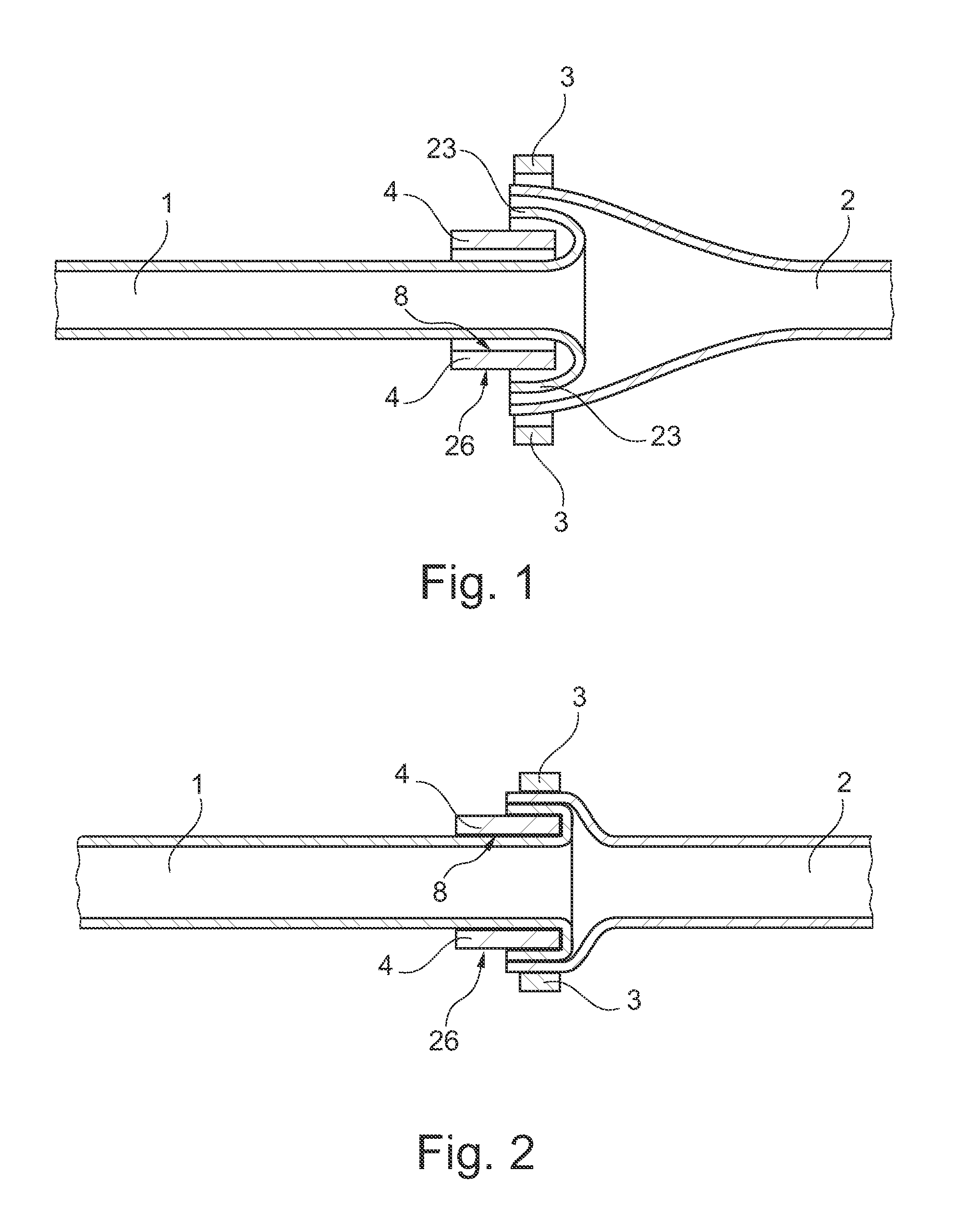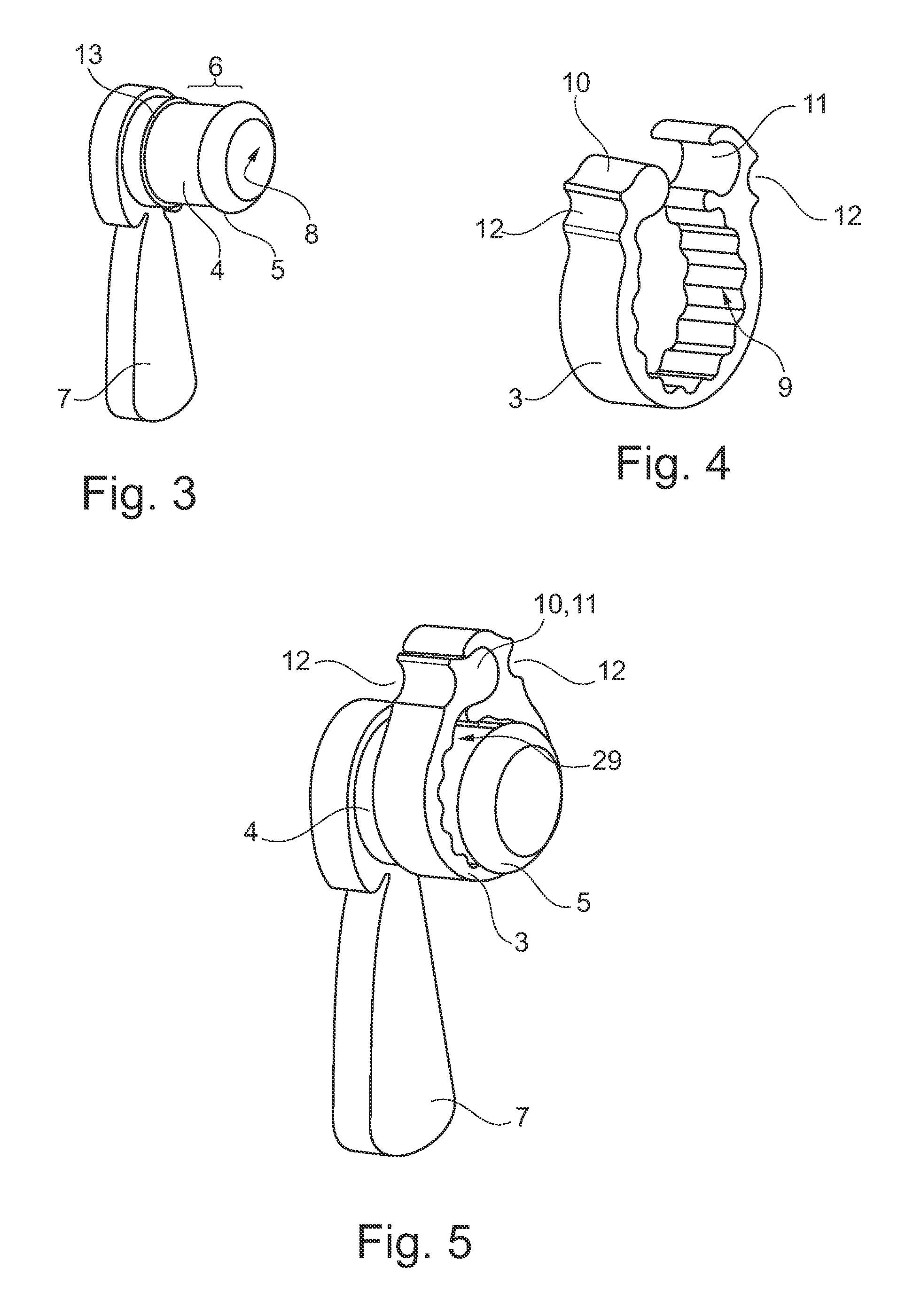Medical device
a medical device and a technology for preventing leakage, which is applied in the field of medical devices, can solve the problems of poor blood flow in the newly joined vessels, high time requirements for suturing, and high cost, and achieves the effects of reducing the risk of leakage, and reducing the risk of infection
- Summary
- Abstract
- Description
- Claims
- Application Information
AI Technical Summary
Benefits of technology
Problems solved by technology
Method used
Image
Examples
Embodiment Construction
[0049]FIGS. 1 and 2 show in schematic form, the interoperational functionality of an external tubular scaffold 4 and a clip 3 when used to anastomose a first tubular organ 1, such as a blood vessel, in end-to-end fashion with a second tubular organ 2, such as another blood vessel.
[0050]In FIG. 1, the first tubular organ 1 has been threaded through the external tubular scaffold 4, such that an inner tubular surface 8 of the external tubular scaffold 4 is adjacent to the exterior surface of the wall of the first tubular organ 1. A cuff portion 23 of the first tubular organ 1, formed by folding the first tubular organ 1 back over itself, has been placed concentrically around an exterior surface 26 of the external scaffold structure 4 and a second tubular organ 2 has been placed concentrically around the cuff portion 23. An open clip 3 has been placed concentrically around the second tubular organ 2 and the cuff portion 23 and the exterior surface 26 of the external tubular scaffold 4.
[...
PUM
 Login to View More
Login to View More Abstract
Description
Claims
Application Information
 Login to View More
Login to View More - R&D
- Intellectual Property
- Life Sciences
- Materials
- Tech Scout
- Unparalleled Data Quality
- Higher Quality Content
- 60% Fewer Hallucinations
Browse by: Latest US Patents, China's latest patents, Technical Efficacy Thesaurus, Application Domain, Technology Topic, Popular Technical Reports.
© 2025 PatSnap. All rights reserved.Legal|Privacy policy|Modern Slavery Act Transparency Statement|Sitemap|About US| Contact US: help@patsnap.com



